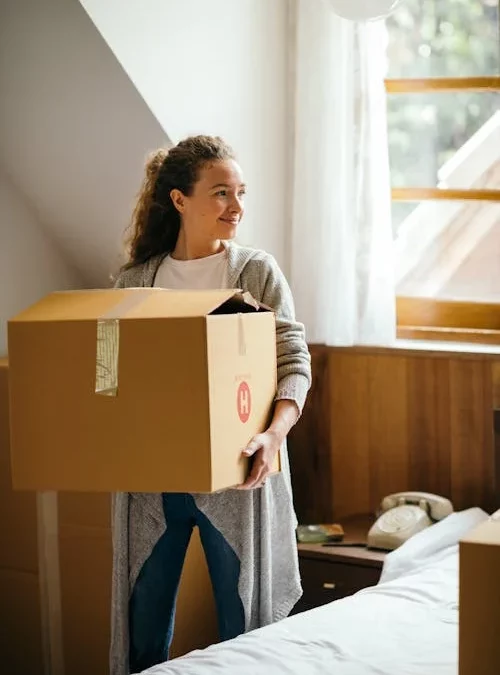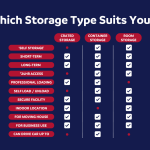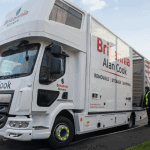Moving to a new home can be an exciting opportunity to start fresh, but it often brings the challenge of packing all your belongings and coordinating with movers. The process of moving can feel overwhelming, but by incorporating self-storage options and taking a systematic approach to packing, you can make the transition much smoother and less stressful.
In this article, Britannia Alan Cook shares five essential tips and tricks for efficient packing and organising, focusing on practical household storage solutions to simplify your move and ensure that your belongings stay safe throughout the journey.
Introduction to Packing and Organising
Moving is one of life’s most significant transitions, and it can quickly become a stressful process if not approached with a plan. Whether you’re downsizing, relocating for a job, or simply starting over in a new space, effective packing and organisation can make all the difference. By planning ahead and utilising self-storage if needed, you can reduce unnecessary stress and ensure your move is as seamless as possible.
In addition to easing the burden on moving day, taking the time to declutter and organise can help you save space, protect your valuables, and even cut down on moving costs. Self-storage, for example, can act as a temporary home for seasonal items, furniture, or things you don’t need immediately. This gives you more flexibility in managing what goes to your new home and what can be stored away safely.
Essential Packing Supplies
The first step to stress-free packing is gathering the right materials. High-quality supplies can make a huge difference when it comes to protecting your belongings. Here’s a checklist of essential packing items you’ll need:
- Sturdy boxes of various sizes
- Bubble wrap and packing paper for fragile items
- Packing tape to seal boxes securely
- Markers and labels for easy identification
- Plastic bins for items that need extra protection from moisture
- Moving blankets to protect large furniture from scratches during transport
If you’re using a self-storage facility, take extra care to pack items securely. Use void-fillers like packing peanuts, paper, or soft materials like towels and clothing to cushion fragile goods. Clearly label each box, especially if it contains breakables or essential items that you may need to access sooner.
Step-by-Step Guide to Efficient Packing
1. Start Early
Procrastination can make the packing process far more stressful than it needs to be. Aim to begin packing several weeks in advance of your move, especially if you have a large home or a lot of belongings. Start with non-essential items—those you won’t need in the weeks leading up to the move—and work your way to more frequently used items as moving day approaches. Tackling one room at a time will make the process more manageable and help you stay organised.
2. Declutter
A move is the perfect opportunity to declutter your home. Go through each room and decide which items you no longer need or want. You can sell, donate, or recycle things like old clothes, outdated electronics, or unused furniture. By reducing the number of items you have to pack, you’ll save both time and money, as you’ll need fewer boxes and a smaller moving vehicle or storage unit.
3. Pack Room by Room
Packing room by room keeps things systematic and organised. When you unpack, it will be much easier to place boxes directly into the appropriate rooms, rather than sorting through items scattered across different boxes. Be sure to label boxes by room and content, especially if you’re storing some items in a self-storage unit or transporting them at different times.
4. Packing Method
The way you pack your boxes matters. Start by placing heavier items at the bottom and lighter ones on top. This ensures that fragile items are cushioned, reducing the risk of damage during transport. Use towels, socks, and other soft items to fill gaps in boxes and provide extra protection for breakable goods like dishes or glassware.
5. Pack an Essentials Box
Set aside a box for essentials that you’ll need right away upon arrival at your new home. This should include toiletries, basic kitchen supplies, a change of clothes, and important documents. Having these items on hand will make your first night in the new home more comfortable without having to dig through multiple boxes.
Organising Belongings for a Move
Organisation is key to a smooth and stress-free move. Clearly label all boxes and create an inventory list for each one. This step is particularly important if you’re using a self-storage unit, as it will help you quickly locate specific items later on. Color-coded labels can also help you easily identify boxes based on the room they belong to, making the unpacking process faster and more efficient.
Another tip for self-storage users: try to keep similar items together, so you can retrieve what you need more easily. Stack boxes carefully, with the heavier ones on the bottom, and consider creating an aisle in your storage unit to access everything without having to move items around too much.
Conclusion
With these expert packing tips from Britannia Alan Cook, moving doesn’t have to be overwhelming. Whether you’re tackling the move on your own or enlisting the help of professional movers, staying organised and packing strategically will help ensure your transition is smooth and stress-free.
To make your move even easier, get a free, no-obligation quote from Britannia Alan Cook for your moving and self-storage needs, and take the hassle out of relocating!








